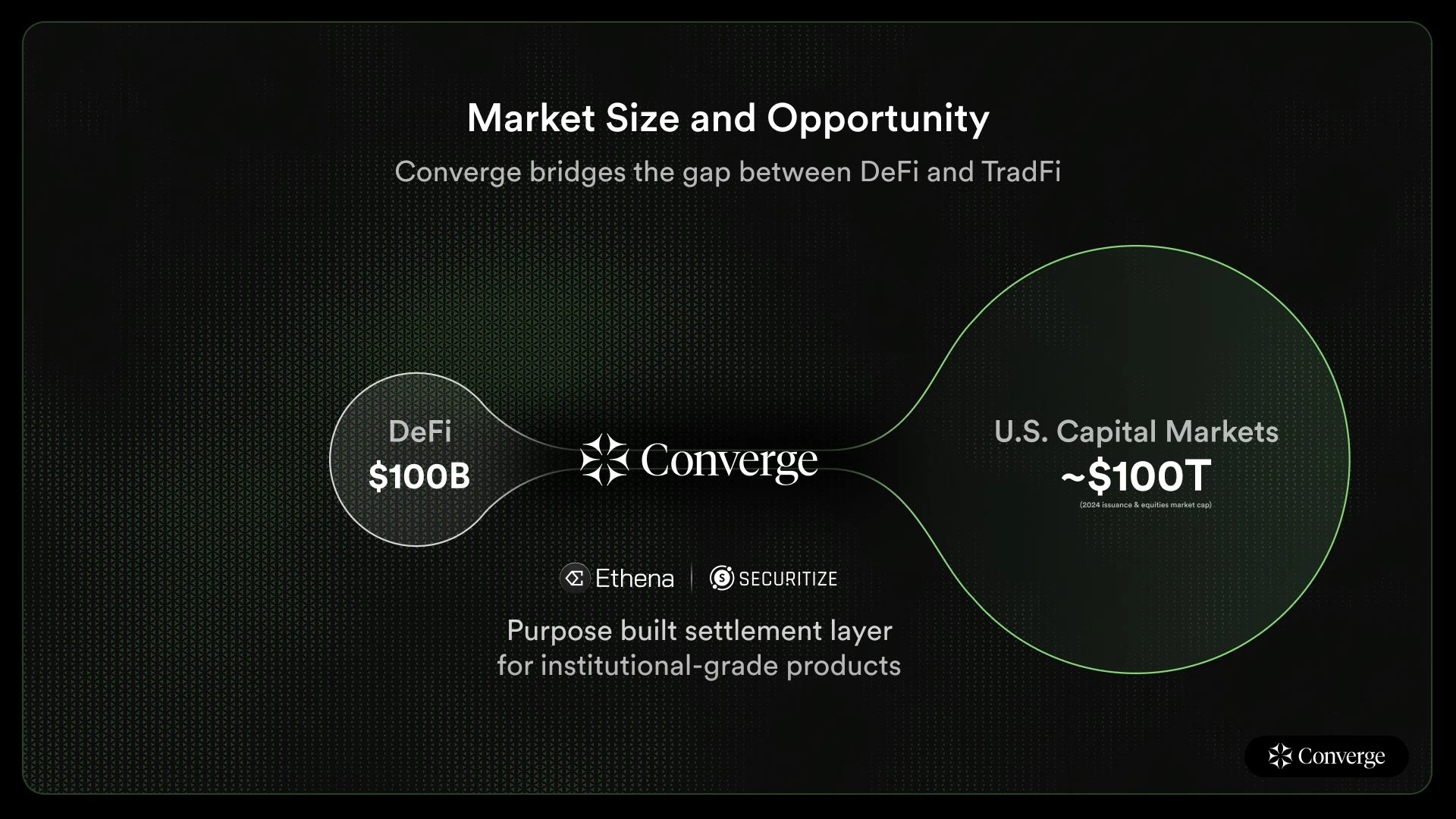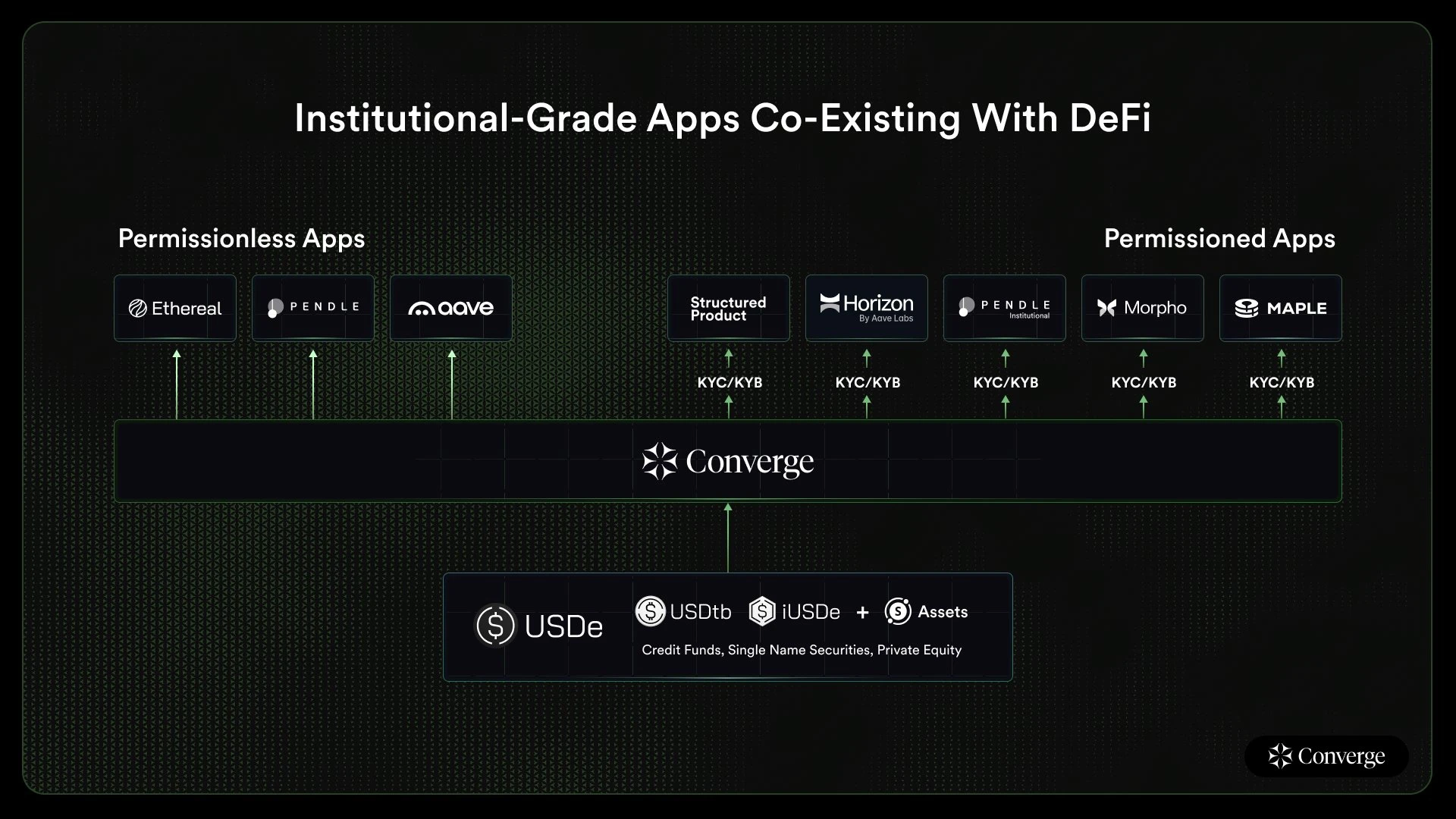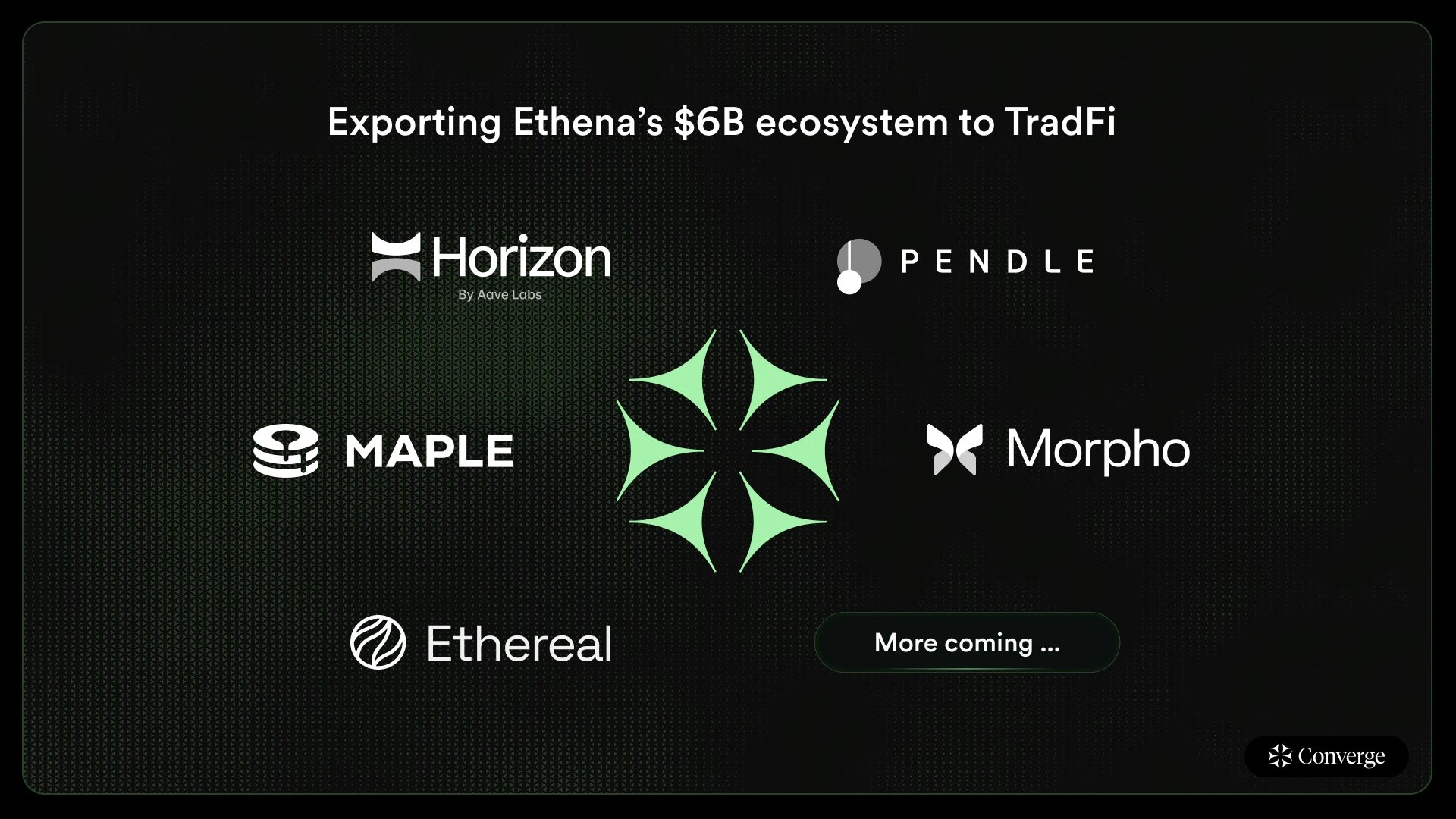Traditional financial giants hold trillions of dollars in capital but are trapped by compliance constraints; DeFi pioneers have innovative technologies but are difficult to gain mainstream recognition. This split has existed for a long time, like an invisible gap, becoming the biggest theme in the current cycle and in the next few years, resisting the inflow of trillions of institutional funds.
Just last week, Ethena Labs and Securitize teamed up to launch Converge, a traditional financial and digital dollar settlement network. The vision is to provide the first settlement layer blockchain designed specifically for the integration of TradFi and DeFi.
The era of integration of traditional finance and DeFi may be coming.
Solving the three major difficulties in the development of RWA
In the face of the trillion-dollar fund pool in the traditional financial market, DeFis current TVL of $100 billion seems insignificant. Moreover, traditional financial institutions are not unwilling to enter the market, but lack a compliant and efficient access channel. The lack of existing public chains in KYC verification, transaction monitoring and other links has deterred institutional investors with large sums of money.
Ethena and Securitize jointly launched the Converge public chain at this time, aiming at this structural opportunity.

Converges positioning is very clear: a Layer 1 designed specifically for RWA and compatible with EVM.
The problem it wants to solve directly points to the core problem facing the current development of RWA - building a settlement platform that can not only meet the compliance needs of financial institutions but also give full play to the decentralized advantages of DeFi.
In the official information released, Converges solution is quite systematic:
The first is to upgrade the technical infrastructure. By creating a high-quality public chain compatible with EVM, the friction cost of cross-chain assets can be reduced.
Secondly, the establishment of a compliance framework. This has to do with Securitize, an old partner of Ethena, a US investment and financing platform led by BlackRock. Securitizes BUIDL fund is also the largest RWA fund at present, with a TVL of US$1.2 billion. Last year, Ethena had already cooperated with Securitize to launch the USDtb stablecoin guaranteed by the tokenized assets in the BUIDL fund. This time, Securitizes regulatory technology module will be introduced in Converge to achieve full-process compliance coverage from KYC certification to transaction monitoring.
Finally, there is the collaborative construction of the ecosystem. At present, in terms of asset custody, the participation of institutional-level custodians such as Copper, Fireblocks, Komainu and Zodia has provided a guarantee for the safe entry of institutional funds. In terms of DeFi protocols, there are already head protocols such as Aave, Ethereal, Maple Finance, Morpho and Pendle participating, promising to build and distribute institutional-level DeFi products on Converge.
As a result, a three-dimensional layout of technology + compliance + ecology was formed, creating a unique competitive advantage.

The solution to the dual-track design
Looking closely at Converge’s design, the ecosystem will have three pillars running in parallel:
On the open ecosystem side, users have completely permissionless access to DeFi ecosystems and applications that have found product-market fit. These applications are built on USDe, and also include projects incubated and accelerated by Ethena, such as EtherealDEX;
On the compliant financial side, an important highlight of Converge is transaction settlement and asset custody services. In order to participate in Ethena and Securitizes investment products on the platform, users must complete the identity verification (KYC) process. This is to ensure transparency and compliance with legal regulations during the transaction process.
This architecture not only retains the open nature of DeFi, but also opens up a safe channel for traditional funds to enter the market.
It is worth noting that Converge also supports hybrid innovative products such as stock tokenization and credit asset leverage trading. This is equivalent to opening up a digital asset innovation pilot zone next to the traditional financial building, allowing financial institutions to both maintain compliance bottom line and explore cutting-edge application scenarios.
This design allows institutional clients to use familiar development tools while meeting regulatory requirements. It is like replicating a Wall Street-level clearing house in the crypto world, retaining the speed advantage of blockchain while implanting the risk control genes of traditional finance.

The ambition of crypto upstarts to break out of the circle, the strategic intention behind the $6 billion ecological migration
Ethena Labs, which was established less than two years ago, has achieved great success in just a few months, completing the transformation from a startup team to a top player in the industry.
- The fastest decentralized stablecoin in history to reach a market value of $5 billion
- Became the third largest stablecoin in the industry within 10 months of operation
- Protocol reached $100 million in revenue second fastest in history
- Attracted more funds than the Ethereum ETF in Q4 2024
- Maintain an annualized USDe yield of 18% throughout 2024
- Reached strategic cooperation with World Liberty Financial, which has Trump family background
Their ambitions are not limited to building a technical platform. Ethena plans to migrate more than $6 billion in assets in the existing ecosystem to Converge and launch a series of stablecoin products such as USDe and iUSDe. These actions imply a deeper strategic goal - to reshape the on-chain dollar system. The US dollar is still the structural basis for on-chain capital flows, and all protocols involving the US dollar in DeFi can be rebuilt around Ethena and structurally improve economics.
By packaging and exporting crypto-native assets in a way that is recognized by the traditional financial system, Ethena can establish a two-way funding channel. Under this design, institutional clients can participate in DeFi through compliant entrances and also include on-chain assets in traditional balance sheets. This two-way penetration model may become the key to opening the floodgates of institutional funds.

RWA enters deepwater competition
Converges debut reveals three major industry trends:
1. From proof of concept to actual implementation: The RWA project began to focus on specific application scenarios, such as the stock tokenization transaction that was the focus of this breakthrough
2. Compliance becomes a must: More than 80% of the surveyed institutions said that regulatory compliance is the primary consideration for participating in RWA
3. Ecosystem synergy replaces single-point breakthrough: Project parties pay more attention to the integration capabilities of technology, capital, and compliance resources
These changes indicate that the RWA track is moving from the early stage of concept hype to the deep waters of actual implementation. Projects that can build a compliance bridge and solve real pain points may gain an advantage in this competition.
Financial reforms run deep
Converge is expected to launch its mainnet in the second quarter of this year. The validator system will use ENA tokens for staking and transaction verification. At the same time, USDe and USDtb will serve as transaction fee tokens on the network.
Although the actual effect of Converge has yet to be tested by the market, the systematic thinking it demonstrates is worth learning from the industry. In the process of integrating traditional finance and DeFi, the real breakthrough often lies not in a cool technology, but in finding a dynamic balance between compliance and innovation. When institutional funds begin to trickle in along these compliance channels, perhaps we will witness a profound change in the financial system.










